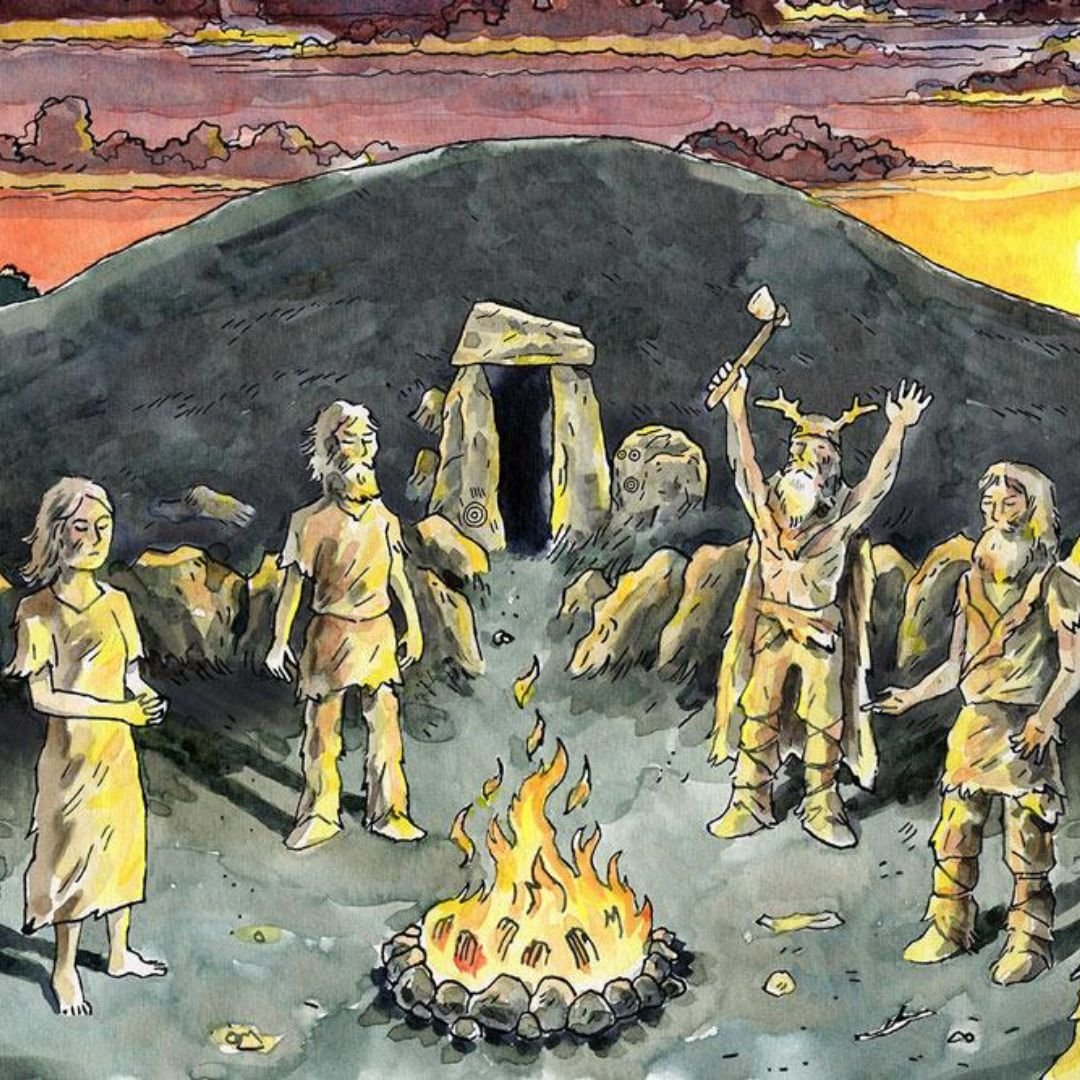The Howick House: Mesolithic Home In Northumberland
The Howick House is a Mesolithic site in Northumberland, discovered by an amateur archaeologist.
Radiocarbon dating indicated that the site was established around 7600 BC and inhabited for 100 years, it was hailed as "Britain's oldest house."
The Howick site came to light when amateur archaeologists stumbled upon flint tools emerging from a cliff edge, situated 3km south of Craster along the Northumberland coast.
This discovery spurred an investigation conducted by the University of Newcastle during the summers of 2000 and 2002.
The highlight of the ancient site was the remarkably well-preserved Mesolithic hut, considered one of the finest discoveries of its kind in Britain to date.
Mesolithic Britain was thought to have been inhabited by hunter-gatherers, constantly on the move in search of food.
Radiocarbon dating of the hearths within the hut revealed its construction around 7800 BC, establishing Howick as the earliest known occupation site in Northumberland.
This designation also positions it as a pivotal site in unraveling Stone Age settlements across Britain.
The site underwent thorough and meticulous excavation, which included geophysical surveying, fieldwalking, and environmental analysis to offer a comprehensive landscape perspective.
All archaeological deposits underwent rigorous screening through a sieve and flotation tank.
This meticulous recording method has positioned Howick as one of the most comprehensively understood Mesolithic sites in Europe.
In early 2005, a bold decision was made to face the harsh seasonal conditions of the Northumberland coast to undertake the reconstruction of the Mesolithic hut, as part of the BBC's documentary series 'Coast'.
The determination was to replicate the hut with utmost fidelity, situating it just a few meters along the cliff top from its original excavation site.
The hut was crafted with a 'tepee' framework made from long birch poles, forming the fundamental cone shape.
To fortify this structure, a circle of uprights and cross beams crafted from sturdy pine logs was added.
The final components were the spars, which not only interlocked the framework but also provided support for the roof.
Opting for turf for the roof was decided upon due to the robustness of the timber frame, which clearly had the capacity to sustain a weighty roof covering.
It is speculated that the original roof might have comprised a blend of turf and reed thatch, with the soil side facing outward and reed thatch affixed onto it, creating an insulated, water-resistant, and fire-retardant roof.
The reconstruction effort spanned four days, during which the weather oscillated between scorching sunshine and typical cliff-top conditions akin to those at the latitude of Moscow.
Nonetheless, the fluctuating weather did not deter the team of volunteers who ardently participated in rebuilding the hut, nor the multitude of visitors who flocked to witness the site.
The dwelling is truly ancient. Thirty-three radiocarbon dates from the site have been obtained and these date the construction of the first hut to around 7,800 BC.
The Howick House is the earliest dated evidence for human settlement in Northumberland and is one of only a few Stone Age dwellings known from the British Isles.
Alongside the Mesolithic hut, the site yielded a cemetery featuring five Bronze Age cists.
During the Mesolithic period in England, which spanned roughly from around 10,000 to 4,000 BC, human societies underwent significant changes as they adapted to the post-glacial landscape.
Hunting and gathering were the primary means of subsistence.
They hunted animals like deer, wild boar, and smaller game using tools such as bows, arrows, spears, and traps. Gathering included collecting wild fruits, nuts, berries, and edible plants.
Mesolithic tool technology saw significant advancements compared to the preceding Paleolithic era. Stone tools became more specialised and refined.
Microliths, small stone blades or points, were commonly used for hunting and cutting tasks.
These were often hafted onto wooden shafts to create composite tools like spears and arrows.
Mesolithic people built temporary shelters using materials such as branches, hides, and reeds. These shelters were simple and easily constructed, reflecting their mobile lifestyle.
Settlements were often located near sources of water and food, but there is evidence of seasonal campsites rather than permanent villages.
They may have lived in small family groups or bands that cooperated for hunting, gathering, and defence.
Ritual and symbolic behaviour are also evidenced by the presence of burial sites, rock art, and artefacts like beads and ornaments.
Reacting to the photos of Howick House on social media, someone said: “This is awesome.. I could live pretty comfortably in something like that.. right on the water.. peaceful and obviously well constructed lol.”
Another person added: “It would be an eye opener to go back to that period, coast to coast forests even a few miles into what's now the sea and coastal marshes teeming with wildlife until humans changed it all..”
If you enjoyed this blog post, please follow Exploring GB on Facebook for daily travel content and inspiration.
Don't forget to check out our latest blog posts below!
Thank you for visiting Exploring GB.




















